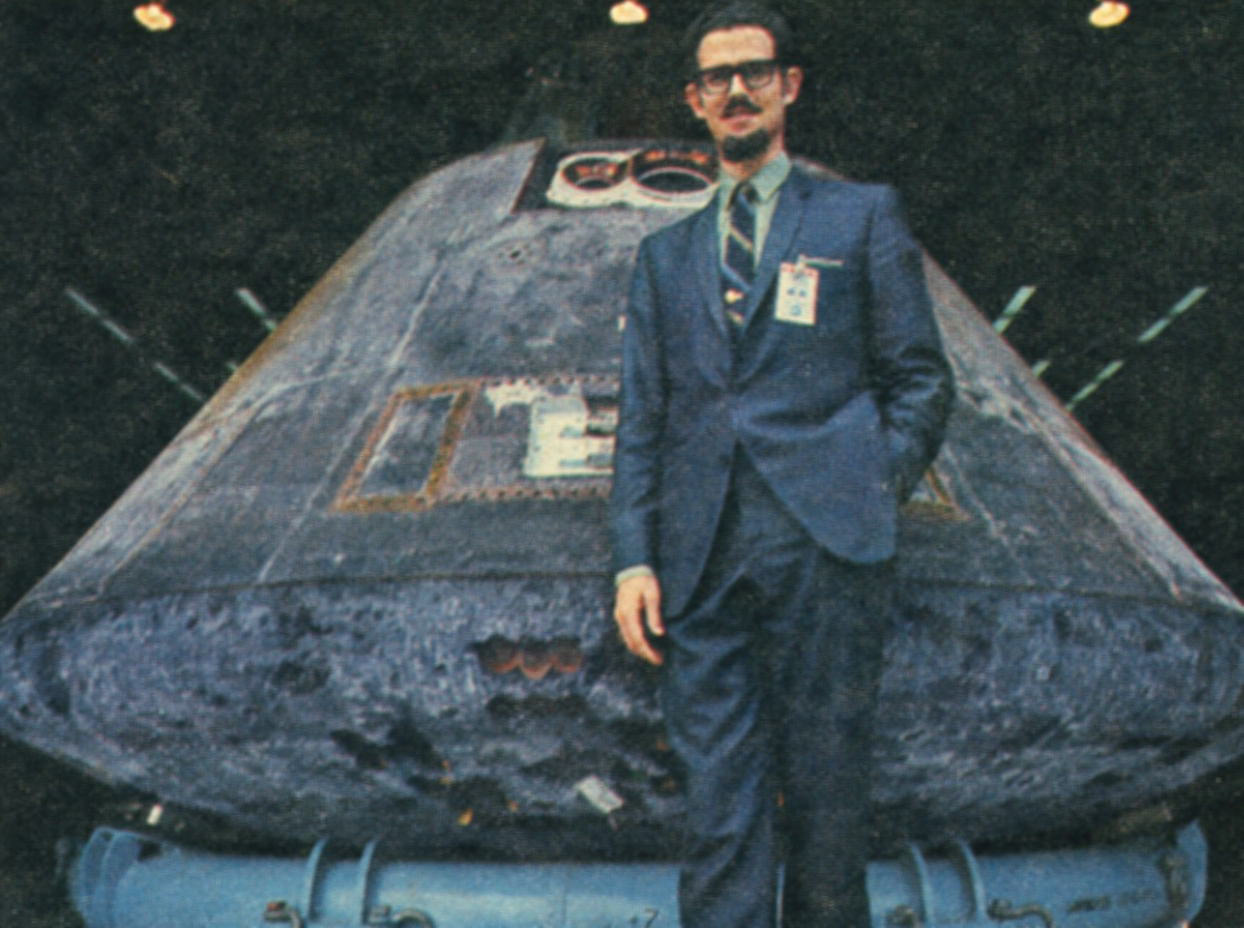
UAlberta engineering alumnus Bryan Erb, seen here with the Apollo 17 re-entry capsule, designed the heat shields used on the Apollo space missions, ensuring a safe return for astronauts.
It was July 20, 1969, and the first humans to set foot on the moon were dilly-dallying. Experiencing one-sixth gravity for the first time, astronauts Neil Armstrong and Buzz Aldrin were skipping and jumping across the lunar surface.
Watching them on his television 384,400 kilometres away in the town of El Lago, Texas, Bryan Erb was scolding the astronauts for "cavorting" instead of getting down to business and gathering lunar rocks.
"Quite subconsciously I found myself shouting at the TV: 'Quit jumping around, and pick up the damned rocks!'"
As a key member of the Apollo programs, Erb had a vested interest in seeing the astronauts gather rocks quickly in case an emergency struck and they had to leave the moon prematurely.
Erb, who graduated with a degree in civil engineering from the University of Alberta in 1952, designed heat shields for the Apollo spacecraft, protecting the lives of the astronauts as they re-entered the Earth's atmosphere at 40,000 km/h.
This week, as the world marks the 50th anniversary of Apollo 11, the first manned mission to the moon, Erb looks back with a sense of pride and nostalgia.
"It was a very exciting event. It's one of those moments that changes people's mindset as to where humanity fits into the universe and what our destiny might be," he said.
In the early days of NASA's manned space missions, engineers and astronauts lived and worked together in communities near what is now the Johnson Space Center in Texas.
"We lived in El Lago and there were a lot of astronauts around, a dime a dozen, and it was no big deal. Jan Armstrong (the wife of astronaut Neil Armstrong) was our daughter's swim coach down at the pool," he recalled. "It was a great community."
Erb was inspired, as a fifth-grade student growing up in Calgary, to become involved in space exploration. A school guest speaker who had travelled the world shared his stories with the students, but his reference to future space travel struck a chord with Erb.
"He said 'One day, man, we're going to go to the moon.' And that really stuck in my mind."
After graduating with his civil engineering degree, Erb went on to complete two Master's degrees-one at the College of Aeronautics in the U.K. (now Cranfield University) and a second back at the U of A, in fluid mechanics. In the U.K., he said, "I specifically chose re-entry into the atmosphere as my area of study because I knew that if we were going to travel to the moon, we'd need to come back."
He was also a Sloan Fellow at MIT, earning a Master's in Management. In 1990 the U of A presented Erb with an Honorary Degree.
Erb made many contributions to space exploration. He devised the "barbecue" method of thermal balance for the Apollo flights-rotating the spacecraft on its horizontal axis to keep it evenly heated and exposed to solar radiation. He played a major role in activating the Lunar Receiving Laboratory, where Apollo astronauts were quarantined and lunar material was examined. Later, he managed a project that used satellite data to conduct the first world-scale inventory of wheat. Following his retirement from NASA, Erb joined the Canadian Space Agency and represented Canada on the Space Station Program at the Johnson Space Center.